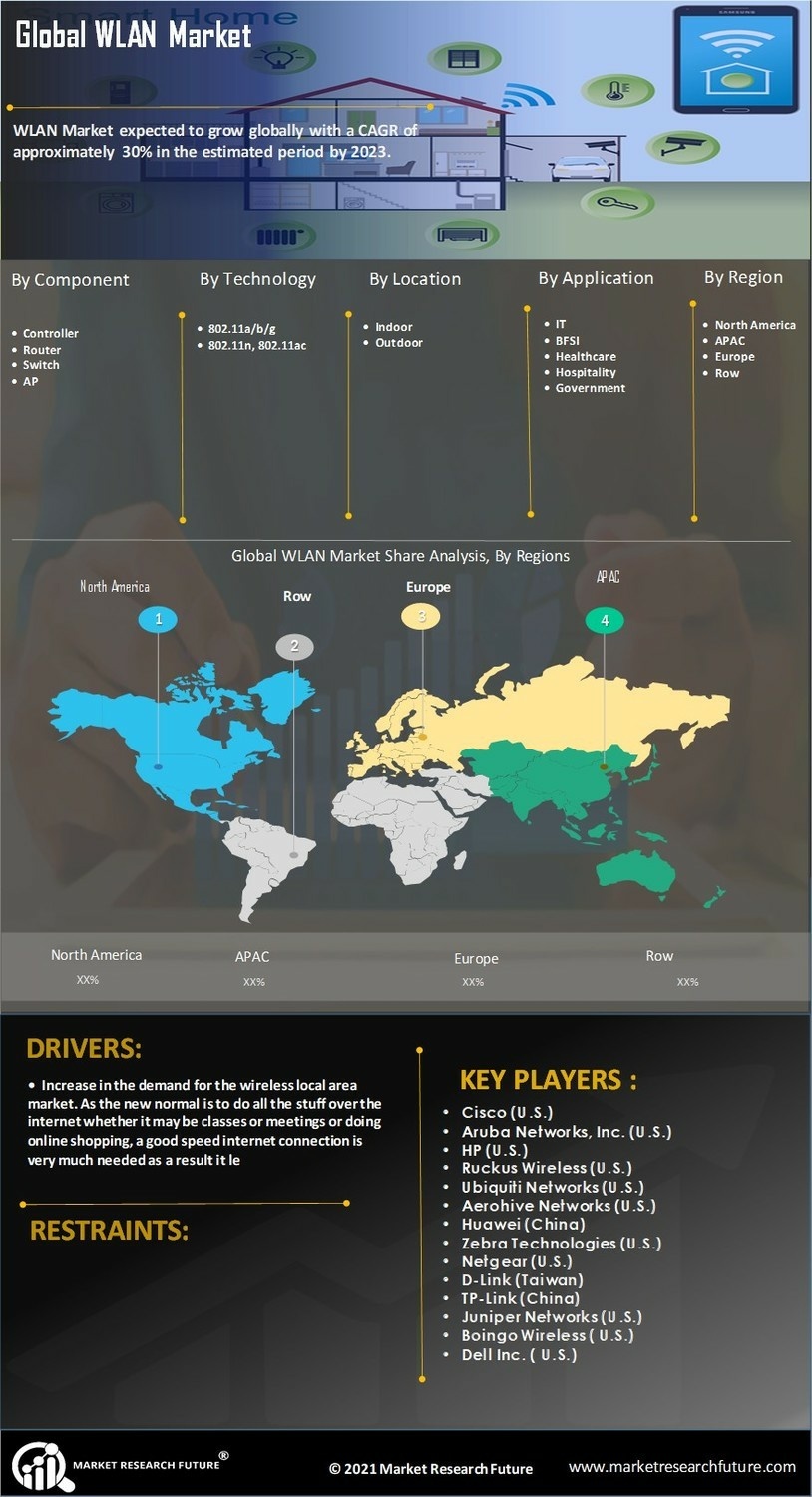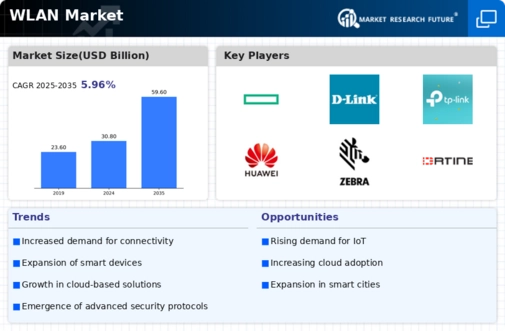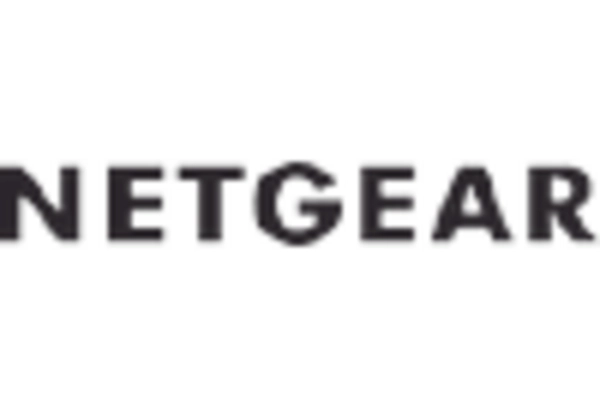Emergence of Smart Cities
The emergence of smart cities is reshaping the WLAN Market by creating a demand for advanced wireless infrastructure. As urban areas increasingly adopt smart technologies to improve efficiency and quality of life, the need for robust WLAN Market solutions becomes paramount. Smart city initiatives often involve the deployment of sensors, cameras, and other connected devices that require reliable wireless connectivity. Data indicates that investments in smart city projects are expected to reach trillions of dollars over the next decade, highlighting the potential for growth within the WLAN Market. This trend encourages collaboration between governments, technology providers, and telecommunications companies to develop comprehensive WLAN Market solutions that can support the diverse needs of smart city applications.
Increased Focus on Network Security
The heightened focus on network security is a critical driver of the WLAN Market. As cyber threats become more sophisticated, organizations are prioritizing the protection of their wireless networks. Recent statistics reveal that a significant percentage of businesses have experienced security breaches, prompting them to invest in advanced WLAN Market security solutions. This trend is particularly relevant as more devices connect to wireless networks, increasing the potential attack surface. WLAN Market players are responding by developing innovative security protocols and technologies to safeguard networks against unauthorized access and data breaches. The emphasis on security not only addresses immediate concerns but also fosters trust among users, ultimately driving the adoption of WLAN Market solutions across various sectors.
Growing Demand for High-Speed Internet Access
The increasing demand for high-speed internet access is a primary driver of the WLAN Market. As more consumers and businesses seek reliable and fast connectivity, the need for advanced wireless local area networks becomes evident. According to recent data, the number of internet users continues to rise, with projections indicating that by 2025, there will be over 5 billion internet users worldwide. This surge necessitates robust WLAN Market solutions to accommodate the growing traffic and ensure seamless connectivity. Furthermore, the proliferation of bandwidth-intensive applications, such as video streaming and online gaming, further fuels this demand. Consequently, WLAN Market players are compelled to innovate and enhance their offerings to meet the expectations of users who prioritize speed and reliability.
Rise of Remote Work and Digital Collaboration
The shift towards remote work and digital collaboration has significantly impacted the WLAN Market. As organizations adapt to flexible work arrangements, the reliance on wireless networks for communication and collaboration tools has intensified. Data suggests that remote work has become a permanent fixture for many companies, with a substantial percentage of the workforce continuing to work from home. This trend necessitates the deployment of secure and efficient WLAN Market solutions to support virtual meetings, file sharing, and other collaborative activities. Moreover, businesses are increasingly investing in WLAN Market infrastructure to ensure that employees have access to high-quality internet connections, regardless of their location. This evolving work landscape presents opportunities for WLAN Market providers to develop tailored solutions that cater to the unique needs of remote teams.
Integration of Internet of Things (IoT) Devices
The integration of Internet of Things (IoT) devices is a significant driver of the WLAN Market. As more devices become interconnected, the demand for reliable wireless networks to support these connections has surged. Current estimates indicate that there are billions of IoT devices in use, and this number is expected to grow exponentially in the coming years. WLAN Market solutions must evolve to accommodate the unique requirements of IoT applications, which often involve low power consumption and high connectivity. This trend not only enhances the functionality of smart homes and industrial applications but also drives innovation within the WLAN Market. Companies are increasingly focusing on developing WLAN Market technologies that can efficiently manage the increased device density and ensure seamless communication between devices.


















Leave a Comment